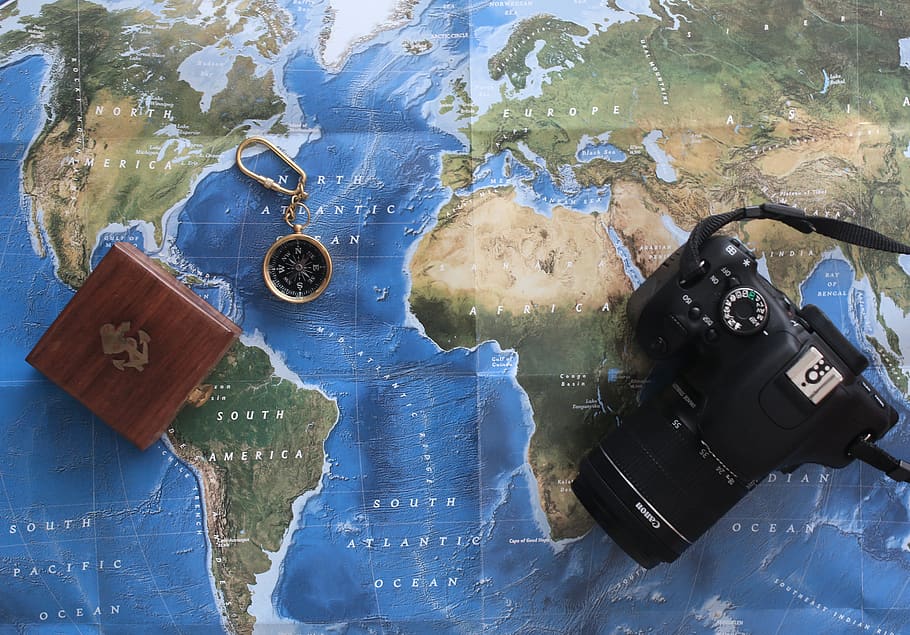We all panic about what to pack and when to pack for a trip, whether abroad or domestically. Travelling can be stressful for anybody and when you leave it to the last minute, the rush makes everything confusing. You end up forgetting things you need to pack, even the essentials and are forced to buy them during your travel instead. We have catered a list of absolute essentials you will need for your trip that you are guaranteed to always remember!
Universal Adapters
If you heavily rely on digital media and travel abroad, you will absolutely need a universal adapter. Buying one at the airport or the country of arrival can be much more expensive and often very limited.
We recommend: Ceptics Universal Travel Adapter – 3-in-1 Worldwide Travel Adapter, Universal Plug Socket and 2 x USB, with 2.4A, International Travel Adapter (Amazon).
Moisturiser & Sunscreen
With the weather being unpredictable and varying in each country, it’s important to hydrate and protect your skin against harsh conditions. Cold and hot weather that differs from your country’s weather can affect your skin greatly.
For hot weather, we recommend: Be Bodywise Sunscreen Lotion with SPF 50 (Amazon, Nykaa and more).
For cold weather, we recommend: Cetaphil Moisturising Lotion (Amazon, your local pharmacy and stores, Nykaa and more). Combine with any SPF product.
First Aid Kit
You never know when you might get injured or sick during travel. During that occasion, preparation is key with a dedicated First Aid Kit. The kit must be portable, easy to access and have the basic needs. This is especially important for people looking to explore and the risk of injury is higher.
We recommend: Quick Heal First Aid Kit – 75 items set – with all the medicines inside (Amazon). However, First Aid Kits are very commonly found and sold anywhere so you can pick any or customise your own.
Travel Pillow
One of the fundamentals of travelling is to get a good night’s sleep to keep up the energy for all the sightseeing and exploration. It’s hard to do so if your flight, train or bus is late at night or early in the morning and the seats are usually uncomfortable. Your best companion to cure this problem is a trusty travel pillow that supports your neck well. You can usually attach this to your bag to save space instead of finding a way to stuff it inside.
We recommend: Amazon Basics Travel Neck Pillow, Unisex, Multipurpose, U-shaped (Amazon).
Portable Phone Charger
Keeping your phone charged and ready can be difficult during travel. We all feel a sense of doom without our phones, especially in a place unfamiliar to us. While the good news is that most places indoors will have a charging point, most transportation modes do not have one.
We recommend: Mi 10000mAH Li-Polymer, Micro-USB and Type C Input Port, Power Bank 3i with 18W Fast Charging (Amazon).
Reusable Water Bottle
Reducing plastic waste is a priority in the present and for the future. Bringing a reusable water bottle is recommended and even beyond environmental causes, it is more hygienic and reliable. If you have the budget for it, buying a water bottle with an in-built filter is a step higher as it would protect you from harmful bacteria.
For a regular bottle, we recommend: Milton Alive 750 Stainless Steel Water Bottle, 750 ml, Black | Leak Proof | Office Bottle | Gym Bottle | Home | Kitchen | Hiking | Treking Bottle | Travel Bottle (Amazon).
For a bottle with a filter, we recommend: LifeStraw Go 2 Stage Tritan Water Bottle with Carbon Integrated Filter Straw for Daily use, Travel, Camping & Outdoor Activity (Amazon).
Packing Cubes
Organisation is key when packing a suitcase or a backpack. Packing cubes are bags that can easily keep your clothes separate and organised to your liking and system. These would not only save space but also save time when searching for a specific item.
We recommend: RENSARE Clothes bag, set of 3, check pattern/grey black (Ikea).
Collapsable Bag
For those who love a good shopping spree during travel, a collapsable bag is a must-have. Since not every flight will allow a second luggage or a second luggage can be highly inconvenient for solo travellers, a collapsable bag is a pocket and space-saving alternative to a suitcase. On top of that, storing this in your suitcase will not take up any space if you decide not to use it.
We recommend: Lightniing Hammerz Nylon 285 Cms Travel Duffle Bag Expandable Folding Travel Bag for Women, Lightweight Waterproof Carry Luggage Bag for Travel (Amazon).
These are the prime essentials to complete your trip safely and to ensure a smooth journey for you.
Bon voyage!
